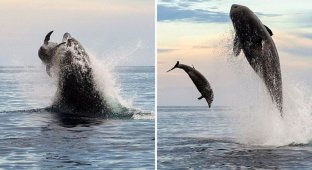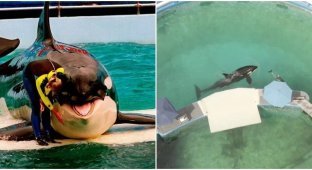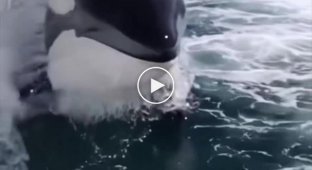Orca dolphin and narluga: the strangest whale hybrids (11 photos)
Unique creatures, which are known to us from a few specimens! 
Only today! Only now! We have a killer whale dolphin performing, the only one of its kind!
"How could a killer whale and a dolphin make a child together? The difference in their sizes is colossal, it's physically impossible!" And, you know, you're right. It really is impossible. 
A bottlenose dolphin and a killer whale next to a person.
Killer whales are the children of bottlenose dolphins and small killer whales. They are indeed much smaller in size than their namesakes. And yet the difference in size between the two species is extreme: a dolphin is about 2 meters long and weighs 300 kilos, while an adult micro killer whale is almost 2 times larger and 6 times heavier. 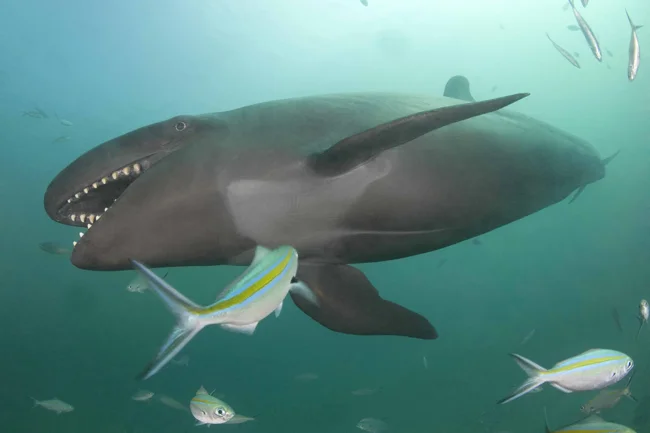
This is what a small killer whale looks like. But its teeth are not small at all!
That is why the workers of the Tokyo Zoo could not even imagine that a romantic relationship could develop between these two animals. But they were wrong, and in 1981 the first killer whale dolphin was born in captivity. To die 200 days later. There is no information on the Internet about the causes of the baby's death. Perhaps the combination of genes that the child received could not ensure normal life. Or maybe he died due to violated conditions of detention or an infectious disease. 
Keeping aquatic animals in captivity is a damn expensive business. Especially when their biology is unique and not completely understood.
It doesn't matter, because the next wholphin confirmed that these hybrids can be viable and fertile. Kekaimalu was born in 1985 and passed away just over a month ago at the age of 39. Not only was she healthy and hardy, but she also organically combined the qualities of both species. Size, weight, bone shape and number of teeth - all the characteristics are exactly in the middle between the two species. 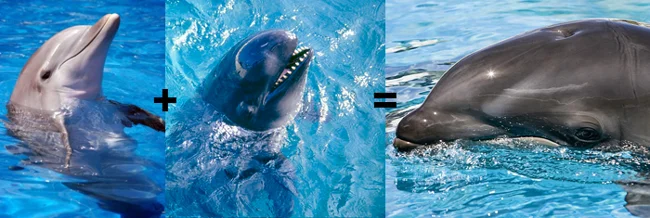
Love is blind, you can fall in love with a killer whale! 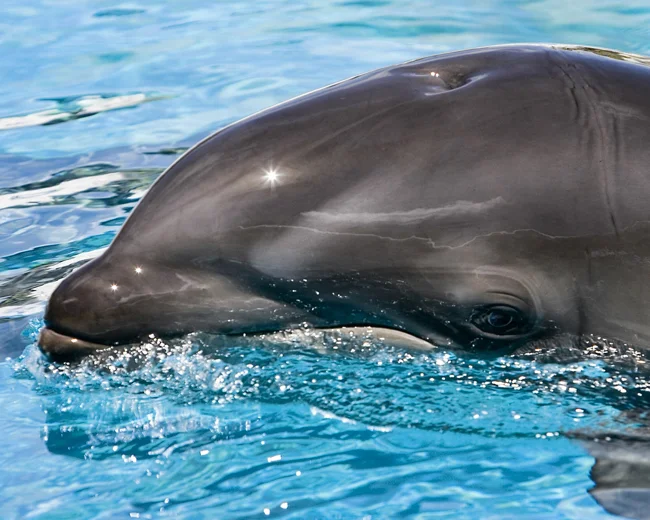
The killer whale is 9 months old. And she weighs almost as much as an adult bottlenose dolphin!
During her long life, by dolphin standards, she gave birth to three children from two bottlenose dolphins. The first baby was stillborn, the second lived for 9 years. And the third quarter-killer whale Kavili Kai has been alive and well for 20 years!
Despite the fact that hybrids are tenacious and capable of reproduction, there is not a single documented case of the birth of a wholphin dolphin in the wild. Yes, their sociability, intelligence and ability to adapt allow them to break through the barrier separating the two species. But for this, it seems, special conditions are needed. 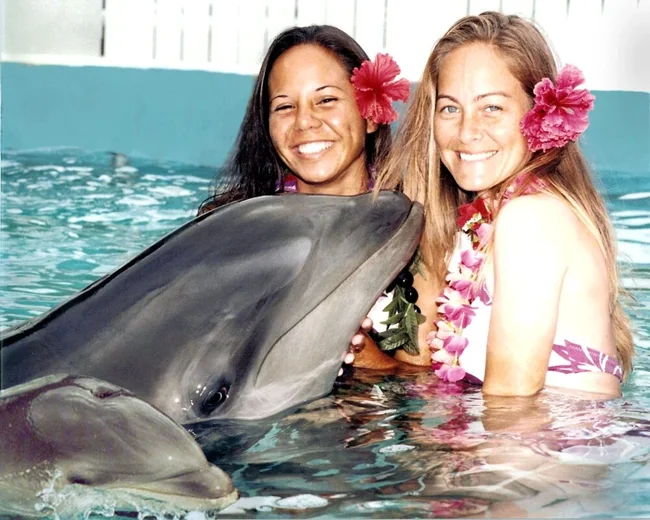
Kekaimala with newborn Kavili Kai.
However, in 2018, researchers discovered another hybrid. A teenager whose mother is a beakless dolphin and whose father is a large-toothed dolphin. What events led to its birth are still unknown. Scientists assume that the prerequisite was the reduction in the number and destruction of the habitat of the parent species. More and more often, these animals live in mixed packs and hunt in the same territory. This means that the chance of mating increases. 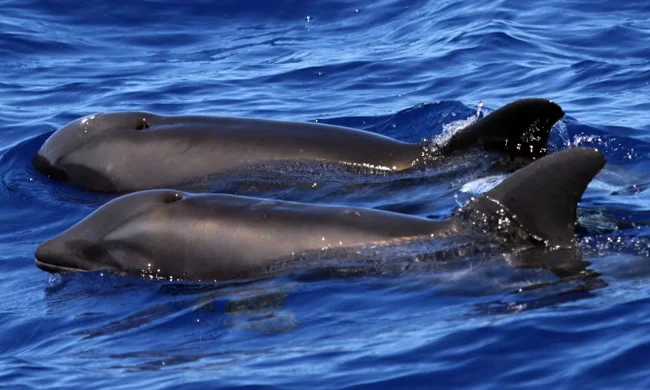
The baby closer to us is that very hybrid.
But where on our planet the narluga came from - the child of a narwhal and a beluga - is an even more obscure mystery. The strange animal was caught 35 years ago by an Inuit hunter. At the moment, only the skull remains of the hybrid. But what a skull! 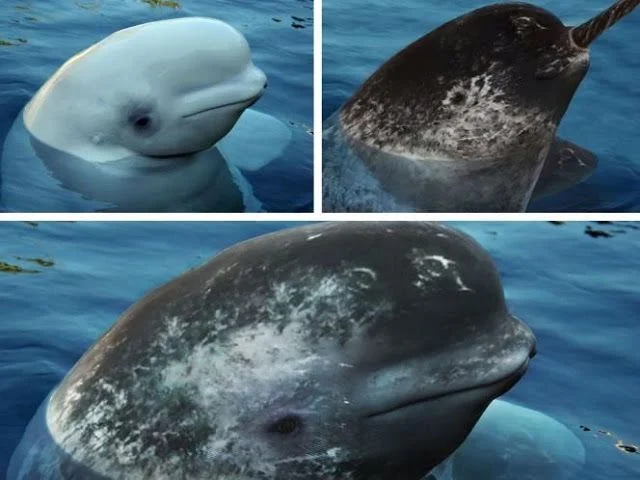
We can only guess what a beluga-narwhal hybrid actually looked like.
For an ordinary person, not an anatomy specialist, the beluga's skull is no different from the skulls of other cetaceans. The narwhal is easily identified by its three-meter spiral tooth that is 2-3 meters long. The narluga combines both options: its teeth are large, spiral, and turned outward, but do not extend far beyond the jaw. Was it convenient to eat with such a strange mouth? Most likely not. But the narluga turned out to be viable enough to grow into an adult. And that's already a lot. 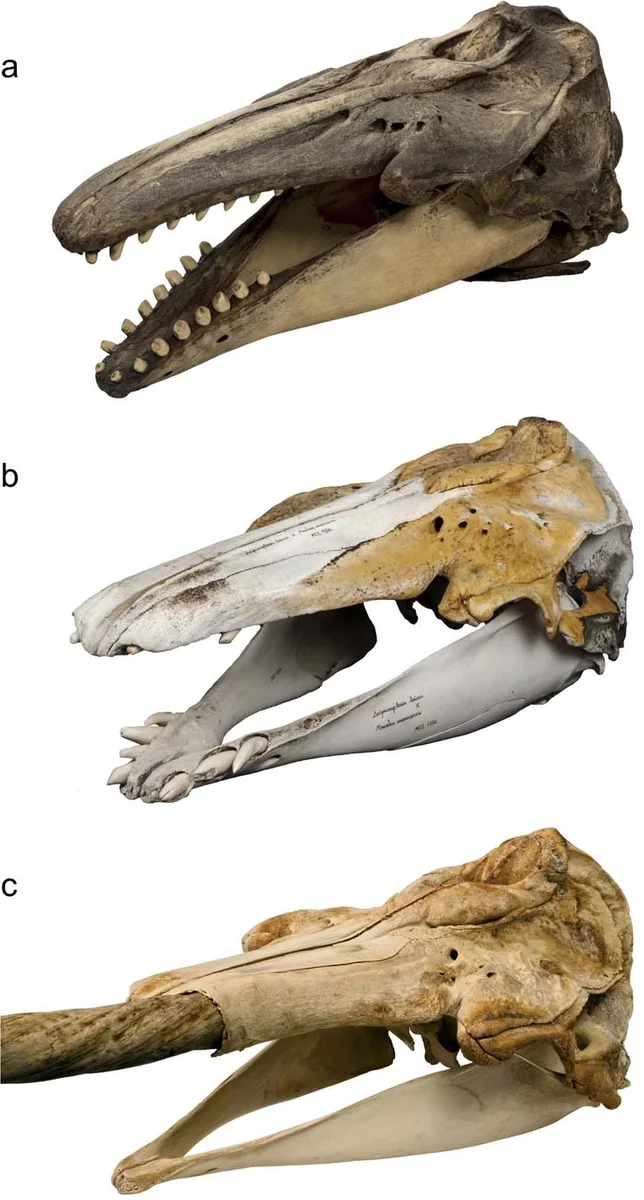
Pay attention to the structure of the teeth. On top is a beluga whale, on the bottom is a narwhal. And in the middle is our hero. 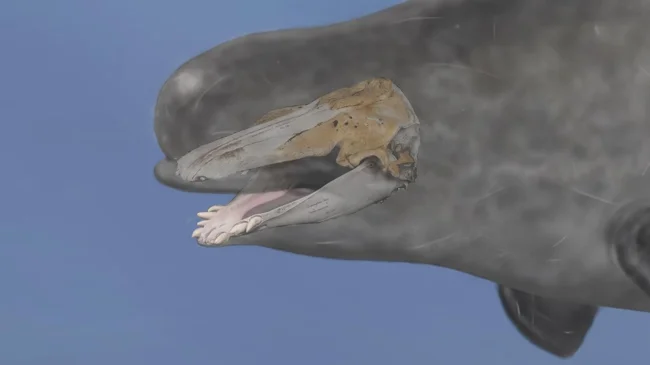
And this is a model of what a hybrid with such a skull might look like.
As a rule, hybrids live the hard life of outcasts. They are not so effective in obtaining food, they have little chance of leaving offspring. But for evolution, whorls, narlugs and the like play a huge role. These strange creatures are the only reliable way of transferring genes between different species. And the higher the genetic diversity of a population, the greater the chance that it will resist environmental changes. In other words: the suffering of hybrids is the price for the evolutionary success of the parent species.












